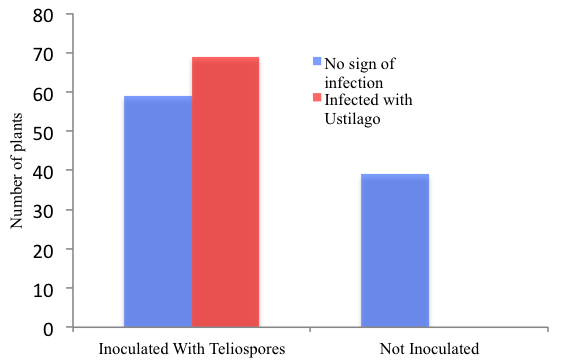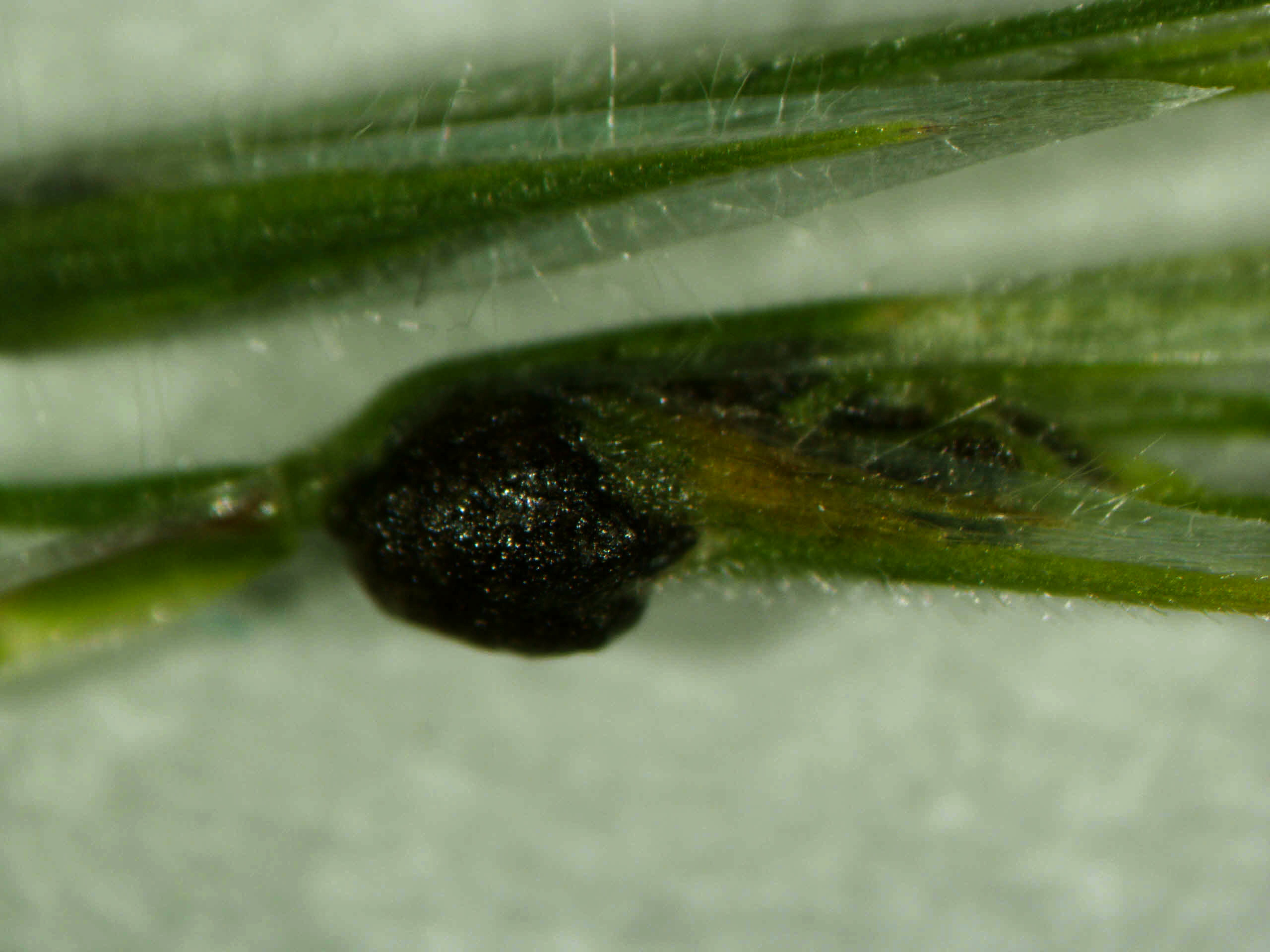
Successful Inoculation of Cheatgrass with Ustilago Bullata
Block title
This week we harvested an experiment in which we had inoculated cheatgrass with the fungal pathogen, Ustilago bullata. U. bullata prevents seed production in infected plants and produces irregular infection rates in the field. Our experimental inoculation resulted in a 45% infection rate, compared to zero infected plants in non-inoculated controls.

Figure 1. Infected plants outnumber non-infected plants in teliospore inoculated treatment.
Stunted growth characterized 16% of inoculated plants while just 39% produced seeds. U. bullata may penetrate plant tissue but remain dormant, unable to infect the fast growing seed heads. Through culture-based techniques, we can test for U. bullata presence in the inoculated but non-infected cheatgrass tissue. We will also perform germination tests to determine viability of all seeds produced.

Picture 1. An Infected cheatgrass seed head contains millions of fungal spores instead of viable seeds (10x)
Successful inoculation in the lab will help us to understand the mechanisms behind sporadic infection rates in the field. Dual inoculation studies with other cheatgrass endophytes will determine whether priority effects or competition affect infection rate. Cheatgrass at MPG Ranch hosts endophytes that produce anti-fungal compounds to ward off pathogens; perhaps one of these fungi also protects plants from U. bullata infection.

Picture 2. Microscopic view of U. bullata teliospores (1000x).



















